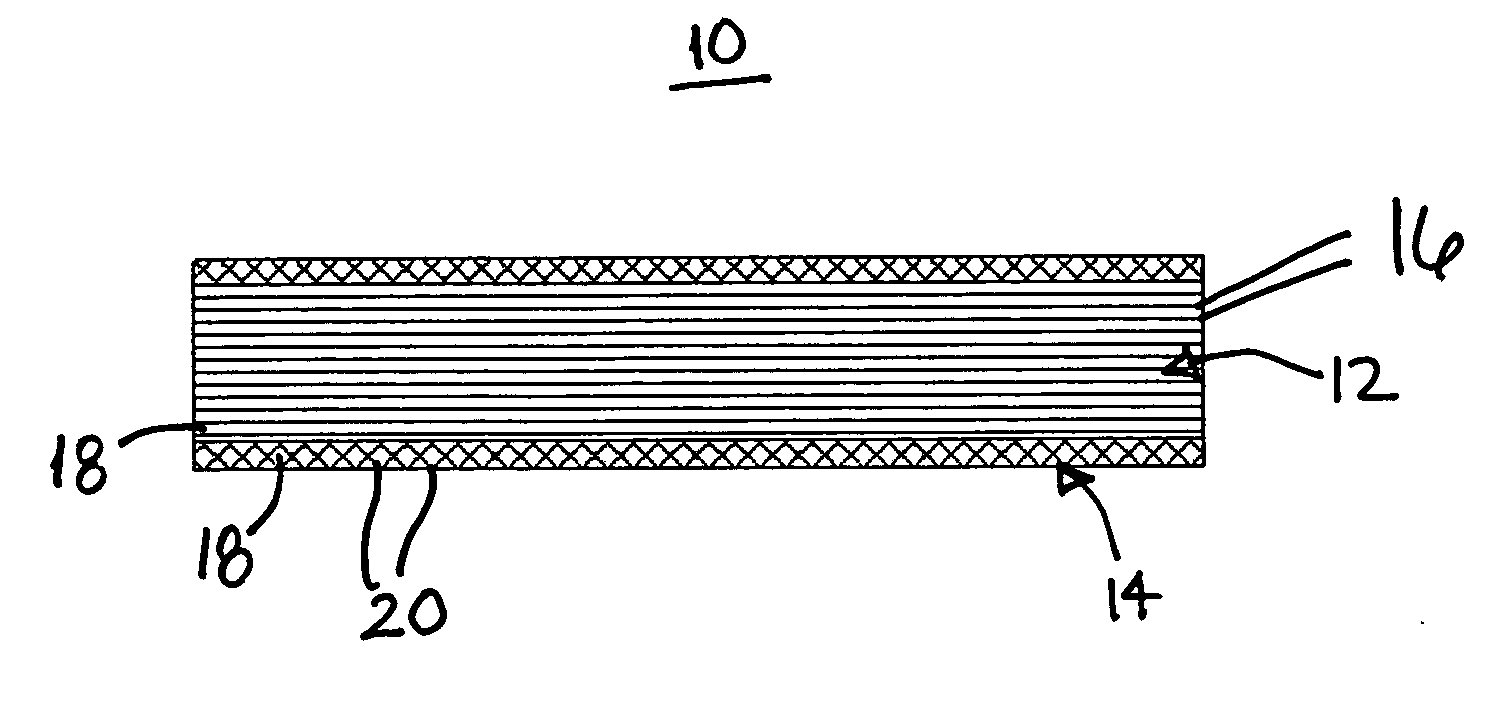Fiber-reinforced composites for dental materials
a composite material and fiber technology, applied in the field of resin impregnated composites, can solve the problems of poor mechanical properties, difficult manipulation, and poor formability of the formable consistency or good formability
- Summary
- Abstract
- Description
- Claims
- Application Information
AI Technical Summary
Benefits of technology
Problems solved by technology
Method used
Image
Examples
examples
[0030] Three separate sets of samples were fabricated. The first set of samples contained a sheath fabricated of braided glass fibers. The second set of samples sample contained a composite rod having a diameter of 0.60 mm and fabricated from glass fiber and vinyl ester. A glass fiber sheath of about 0.05 mm thickness was then braided around the rod. The final diameter of the rod with the braided sheath applied thereto was about 0.70 mm. The third set of samples contained commercially available Splint-It® material available from Pentron Clinical Technologies, LLC, Wallingford, Conn. The samples were cut into small pieces of about 6 inches in length and heat treated as follows: Temperature 1=100° C. for 30 minutes; Temperature 2=150° C. for 30 minutes; and Temperature 3=500° C. for 4 hours
[0031] The heat treatment burned off the resin, leaving the unidirectional fibers in the core surrounded by braided fibers outside as a sheath. The burning of cured resin inside the rod also create...
PUM
| Property | Measurement | Unit |
|---|---|---|
| flexural strength | aaaaa | aaaaa |
| flexural strength | aaaaa | aaaaa |
| flexural strength | aaaaa | aaaaa |
Abstract
Description
Claims
Application Information
 Login to View More
Login to View More - R&D
- Intellectual Property
- Life Sciences
- Materials
- Tech Scout
- Unparalleled Data Quality
- Higher Quality Content
- 60% Fewer Hallucinations
Browse by: Latest US Patents, China's latest patents, Technical Efficacy Thesaurus, Application Domain, Technology Topic, Popular Technical Reports.
© 2025 PatSnap. All rights reserved.Legal|Privacy policy|Modern Slavery Act Transparency Statement|Sitemap|About US| Contact US: help@patsnap.com



